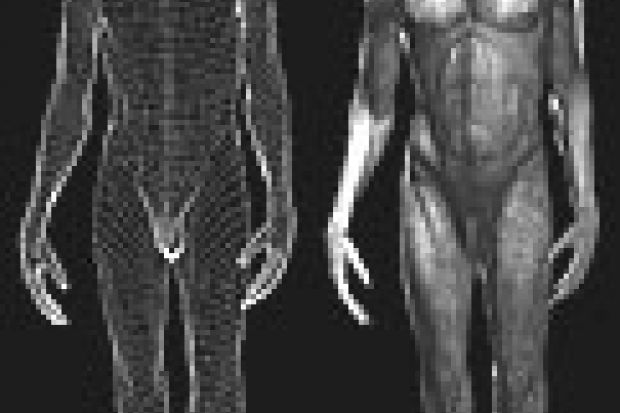Humankind's first footfalls are being reassessed after collaboration between scientists and animators working on the BBC series Walking with Beasts .
After helping breathe life into our earliest ancestors on the television screen, Robin Crompton, reader in anatomy at Liverpool University, was inspired to investigate the feet of higher primates and hominids.
The insights he gained working with Neil Glasbey, animator with the special-effects company Framestore, prompted him to seek evidence that humankind's forefathers may have walked on their hind legs long before they came down from the trees.
The scientist advised the BBC on a reconstruction of Lucy, an extinct Australopithecus afarensis who lived in East Africa between 4 million and 2.7 million years ago.
Biomechanical analysis of Lucy's skeleton had previously led Dr Crompton to conclude that she would not have walked bent-kneed but more upright.
Sue Thorpe, a member of Dr Crompton's team, noted that wild orang-utans in Sumatra walked upright in trees with their knees and hips straight - like humans and, they argue, the australopithicines. It suggests hominids began life on two legs while foraging for fruit and vines.
Dr Crompton's research probes the problematic question of the biomechanics of primate feet.
The energy-saving "spring" in the arch of the human foot, combined with more recent adaptations, enables people to walk faster and run more efficiently than other primates, such as orang-utans, which have opposable big toes to grip branches.
Neil Glasbey said Dr Crompton's advice on the likely timing of shoulder, hip and leg movements and the way it may have swung its arms had been vital in making the animated Lucy seem lifelike.
"The result was completely different from what I was suspecting but it looked a lot more realistic," he said.
The Beasts Within - the science behind Walking with Beasts - will be broadcast on BBC1 on November 28 at 8pm.
Register to continue
Why register?
- Registration is free and only takes a moment
- Once registered, you can read 3 articles a month
- Sign up for our newsletter
Subscribe
Or subscribe for unlimited access to:
- Unlimited access to news, views, insights & reviews
- Digital editions
- Digital access to THE’s university and college rankings analysis
Already registered or a current subscriber?
